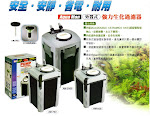Source: http://www.qsl.net/w2wdx/aquaria/diyco2.html
Many methods have been described on what the best way to dissolve the CO2 gas into the tank water. This is the critical point in determining the effectiveness of a DIY system and the reason why many feel that their experience with DIY systems was a bad one. Since the amount of CO2 available in a yeast system is limited by biological production, it is important to get most, if not all, the CO2 produced dissolved into the water. Skimp here, and you have wasted your time, not to mention CO2 gas.
The simplest, and least effective, method is to run the tube into the tank and simply let the gas bubble into the tank, or through an air stone. I do not recommend this method at all. Since most of the CO2 gas simply rises to the surface and is lost.
Next, many have suggested placing this tube at the inlet of a canister filter and allowing the impeller to munch up the gas. While it is effective in dissolving the gas, I do not like this method either, for two reasons. First, the CO2 bubbles can produce cavitations of the impellor, which could cause it to vibrate, making noise and possibly damage the mechanism. Second, some of the components in the impellor use rubber fittings, which could be broken down over time by the high concentrations of CO2 gas and carbonic acids present.
A better but slower method is the use of what is called a CO2 bell. Simply put, this is a hemispherical shaped vessel of some kind, inverted and the CO2 is allowed to fill up inside. The contact area of the gas is increased and passive diffusion of the gas is increased. The drawback of this is if the surface area is not high enough, so that diffusion rate exceeds gas production, the bell will fill with gas and any additional bubbles will run out the side and travel up to the surface and be lost. While this is a draw back, many aqaurists have have had reasonable sucess using this method of gas diffusion. These are also very simple to construct. Many have been constructed from cutting off the tops of one-liter soda bottles, petri dishes, cups, or any hemisphercal shaped object. I would recommend using a material or object that is transparent, to allow for easy viewing
Another method is a diffuser. Two versions of diffusers exist. One is device that increases the time the bubble is in contact with the water. Usually by presenting the bubble with a long spiral course it has to travel. In the image to the right is one example of this type of spiral diffusion method, the Econo Aqualine 500 available from AquaBotanic, and others. The manufacturer claims, "The special construction allows a very high CO2 diffusion rate and automatically removes any false gasses. The reactor is sufficient for an aquarium up to 125 Gallons". This unit is mounted on the inside of the aquarium.


Another diffuser type is a glass diffuser. This is a device that increases the surface area of the CO2 gas by reducing the size of the bubbles substantially. This is a proven method and can be very effective in allowing all of your CO2 gas to be dissolved. In the image to the left is version of this type of diffuser made by Aqua Design Amano Nature Aquarium Goods, the company led by the legendary aquatic artist Takashi Amano. The gas is fed into the tube at the rear, brought down to the bottom and forced against the glass diffusser plate (the black line running in the middle). This plate has thousands of pores which the gas passes through, and once it has done this, the bubbles released through the top of the unit are extremely tiny. This all glass unit is probably the very best of its kind, and also very expensive since it is handmade in Japan. Other manufacturers make similar products. The only drawback of this method is that the plate, usually made of sintered glass, can clog and may need regular maintenance. Other than that singular drawback, this is a proven method of diffusion. The drawbacks of both versions is that their mechanical sophistication do not allow themselves to be easily homemade, and commercially produced products would have to be purchased. There are many commercially available choices, in a wide range of prices, so finding one that works in your budget would not be to difficult, if you decided on going this route.


Mr. Aqua Co2 Counter and Co2 Diffuser
Mr. Aqua Aquarium system
Made in Japan
CO2 Counter:
accurate measurement of CO2 supply, good for CO2 sensitive plants.
CO2 diffuser:
enhance dispersal of CO2 tiny bubbles to your aquarium
Mr. Aqua N001: Co2 Counter (for all sizes)
Mr. Aqua N002: mini CO2 diffuser (good for tank < align="center">N001: Co2 counter










